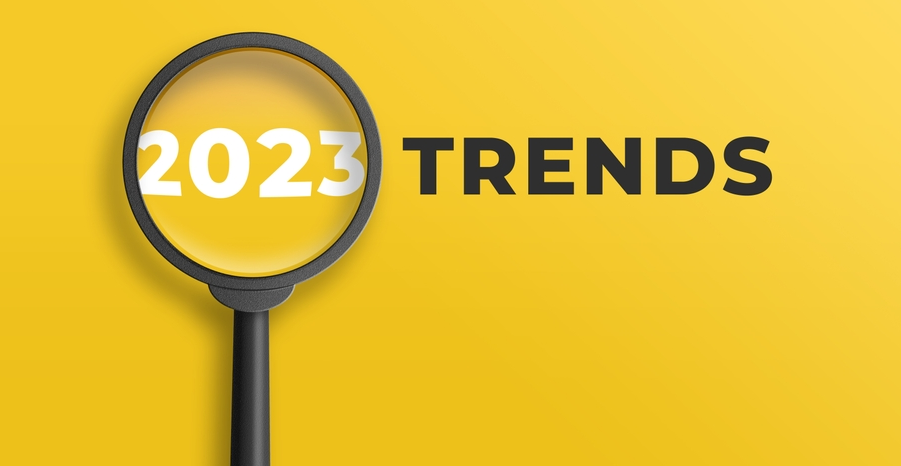As leaders in the global commerce space, Global Payments interviewed thought leaders and payment experts from well-respected companies and surveyed more than 200 businesses worldwide to identify the five top trends for business to watch in 2023.
The result was the 2023 Commerce and Payment Trends Report, which identifies five top trends for businesses to keep on their radar this year and beyond.
2022 saw major challenges for the world’s economies, including inflation, high interest rates and supply chain issues. Recent economic, social and technological disruptions have created exciting new business opportunities to expand into new channels, reach more customers and grow your business.
The challenges and opportunities include:
- Social and live commerce
- Blockchain, real-time payments and open banking
- Digital currency
- Biometrics
- The metaverse
TREND 1 : Social and live commerce
Scroll | See | Shop
Social media platforms are making it easier for brands to meet customers where they hang out on their favourite social channel.
Social commerce
On platforms like Facebook Shop, Instagram Shopping, Pinterest Shopping and TikTokShop, audiences can buy your product there and then, without leaving the platform. It’s immediate, seamless and convenient.
Live commerce
Live commerce taps into the growing popularity of live streaming events. This appealing mix of shopping, entertainment and social interaction lets customers instantly buy a product they see on the screen.
The appeal of social and live commerce for consumers is the ability to buy a product as soon as they see it. To make it even easier to buy, a growing number of businesses are embedding payment links and QR codes directly into social media posts and live commerce streams.
If you thought social selling was just a fad, think again. Globally, social commerce sales reached $US 492 billion in 2021, and are expected to nearly triple by 2025. 52% of businesses said they plan to sell directly on social networks in 2023.


TREND 2 : Blockchain, real-time payments and open banking
Tech meets customer demands
Physical, digital and virtual worlds are merging and technology is expanding to meet evolving customer expectations.
In 2023, we’ll see increased innovation and adoption of payments technologies to meet this demand.
Blockchain
New uses for blockchain are starting to come into focus. A blockchain is a decentralised database (or “ledger”) that contains a growing list of records (or “blocks”) that are linked using cryptography.
Blockchain technology offers some exciting benefits such as solving record-keeping problems and providing a public audit trail for all types of transactions. As the technology matures, it’s expected to deliver faster payments across multiple currencies (including digital) and global borders.
Real-time payments
New technology, regulatory pressure and customer expectations are fueling the growth of real-time payments.
Compared to traditional processing, real-time payments are faster–for consumers and businesses. Instead of the traditional process where transactions are batched, sent to a merchant’s bank and processed at scheduled intervals, real-time payments process and, in many cases, settle instantly.
Find out more about how Eway’s real time payments solution PayTo.
Open banking
Open banking is a form of real-time payments which enables third-party payment and financial services providers to access consumers’ banking transactions and payment history, with consent from the consumer.
This access creates more opportunities for financial innovation such as reducing manual funds transfers between different banks and gives customers better visibility into their complete financial picture.
TREND 3 : Digital currency
Still has its ups and downs
New uses for digital currency–including central bank digital currencies (CBDCs) and stablecoins–continue to emerge. These include cross-border payments and remittances, loyalty and rewards, and digital wallet integration.

Recently, cryptocurrency has experienced market volatility, bad actors and scrutiny by regulators, investors and consumers. As a result, cryptocurrency isn’t expected to be accepted at the point of sale anytime soon. Trust in digital currency systems by all stakeholders, including financial institutions, businesses and governments, will have to be restored before widespread adoption occurs.
TREND 4 : Biometric authentication
Unlocking new opportunities
People already use their finger, face or iris to unlock their smartphones or speed through airport security. That’s biometrics in action. And now, consumers can use biometrics to authenticate payment transactions. Companies are building solutions to authenticate payments using several unique biometric markers.
For consumers, the advantages of biometric authentication are speed and simplicity. In fact, 70% of consumers believe biometrics are easy, and 46% think they are more secure than passwords or PINs. The practical implications for business are growing and around 20% of businesses surveyed reported they’ll invest in biometric identification and payment authentication in the year ahead.

TREND 5 : The metaverse
Where realities merge
Although the metaverse is still being defined, it represents the blending of digital and physical realities where immersive experiences give people a real-life “feel” even though they interact in virtual, digital spaces.
The metaverse offers businesses new opportunities to deepen their relationships with consumers. The metaverse also creates a new channel for commerce.

We expect two models to drive commerce initially:
Direct-to-avatar (D2A) commerce
When you enter the metaverse, you create an avatar–a virtual you. Businesses can then sell virtual products like clothing to your avatar.
Virtual-to-physical commerce
Consumers can buy products while in the metaverse, then exchange them for physical products in the real world.
Just as they move effortlessly from the physical to the virtual worlds and back again, consumers will expect a seamless, integrated payment experience. Think of it as an extension of card-not-present commerce.
Be ready in 2023
Change can be overwhelming—especially when it’s as rapid and profound as the change we’re seeing right now. But it’s also empowering.
Businesses have never had so many opportunities to connect with consumers in ways that drive more revenue for their business. And just as consumers have so many new currency and payment options, businesses can harness different payment technologies—making them faster, easier and more secure for their customers.
2023 is shaping up to be another innovative year for commerce and payments. Now is the time to seize these opportunities—and really own them.


Subscribe to updates
Get the latest news and payment insights from Eway hot off the press.



